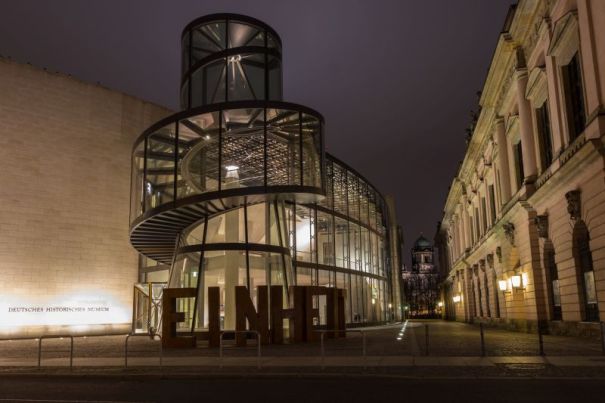Wuhan, Hubei Province, China (Photo: Gosia Sachse aka Głowacka, 21.04.2013)
Yellow Crane Tower (Chinese: 黄鹤楼; pinyin: Huánghè Lóu) is a traditional Chinese tower located in Wuhan. The current structure was built in 1981, but the tower has existed in various forms from as early as AD 223. The current Yellow Crane Tower is 51.4 m (169 ft) high and covers an area of 3,219 m2 (34,650 sq ft). It is situated on Snake Hill (蛇山), one kilometer away from the original site, on the banks of the Yangtze River in Wuchang District.
The Yuanhe Maps and Records of Prefectures and Counties, written almost 600 years after the construction of the tower, notes that after Sun Quan, founder of the kingdom of Eastern Wu, built the fort of Xiakou in 223, a tower was constructed at/on the Yellow Crane Jetty, west of Xiakou, and hence its name.
The tower has been destroyed twelve times, both by warfare and by fire, in the Ming and Qing dynasties and was repaired on ten separate occasions. The last tower at the original site was built in 1868 and destroyed in 1884. In 1907, a new tower was built near the site of the Yellow Crane Tower. Zhang Zhidong proposed ‘奥略楼‘ (Aoliaolou Hall) as the name for this tower and wrote an antithetical couplet for it. In 1957, the Wuhan Yangtze River Bridge was built with one trestle of the bridge on the Yellow Crane Tower’s site. In 1981, the Wuhan City Government commenced reconstruction of the tower at a new location, about 1 km (0.62 mi) from the original site on Snake Hill, and it was completed in 1985.
According to legend, the impressive Yellow Crane Tower was created as a symbol of gratitude from a local tavern owner to a poor Taoist monk who, in gratitude for his hospitality, for which he did not pay at all, drew a crane on the wall of the local crane, which, enlivened by his words, began to dance, thus attracting a crowd of guests and making a friendly family rich.
The symbolism of a turtle with a snake wrapped around it, on which a pair of cranes stands, is also very interesting.
In ancient China, the turtle and snake were, in religious and spiritual terms, symbols of longevity. During the Han Dynasty, the Chinese often wore turtle-shaped pendants and amulets. As a result of the influence of Chinese culture on neighboring Japan, Japanese noble titles and public dignity were associated with the right to use the symbol of the turtle.
One of the legends of the time tells of a female turtle that could not make friends with male turtles, but only with snakes. This aroused the anger of the turtle, which the female repelled, marking the area around her with urine. Since the spread of this legend, males call their female partners “turtles” when they suspect them of infidelity, and the turtle ceased to have a symbolic meaning as bringing happiness.
The artistic presentation of Xuánwǔ, often translated as Black Turtle, shows this creature as a cross between a turtle and a snake, what may have its source in the legend cited above. It should be noted, however, that such an interpretation does not explain the existence of this type of representation earlier, during the Zhou Dynasty.
(Source: Wikipedia)
___________________________________
Today, Wuhan is more associated with the coronovirus epidemic (COVID-19) that appeared in this city at the end of 2019 and has caused the whole world to stand still in the face of such a great threat. It continues to cause more and more victims and has a significant impact on the lives of both the social and economic dimensions of the whole world. Its containment depends on creating in all of us a sense of solidarity and cooperation and a shift in thinking from “I” to “we”. Today, nature says “I check up” and it is up to each of us individually and all of us together to pass this test of humanity.






 Architectural projekt: Doris Schäffler and Stephan Schütz, Berlin, Germany (Photo: Barbara Stachira, 15.09.2018)
Architectural projekt: Doris Schäffler and Stephan Schütz, Berlin, Germany (Photo: Barbara Stachira, 15.09.2018) Sopot (next to the Georgian restaurant), Poland (photo Arkadiusz Lewandowski, 09.2015)
Sopot (next to the Georgian restaurant), Poland (photo Arkadiusz Lewandowski, 09.2015)
 Architect: Gottfried Böhm, Potsdam, Germany (Photo. Gosia Głowacka, 03.05.2014)
Architect: Gottfried Böhm, Potsdam, Germany (Photo. Gosia Głowacka, 03.05.2014) Designer: Ieoh Ming Pei, Berlin, Germany (Photo: René Sachse, 12.03.2016)
Designer: Ieoh Ming Pei, Berlin, Germany (Photo: René Sachse, 12.03.2016) Project: André Waterkeyna,
Project: André Waterkeyna,  Project: I. M. Pei, Doha, Qatar (Photo: Gosia Glowacka, April 2014)
Project: I. M. Pei, Doha, Qatar (Photo: Gosia Glowacka, April 2014) Project: Vlado Milunića and Franka Gehry, Prague, Czech Republic (Photo: Gosia Głowacka, August 2013)
Project: Vlado Milunića and Franka Gehry, Prague, Czech Republic (Photo: Gosia Głowacka, August 2013)